Ukraine’s daring jet-ski raid into Russian-occupied Crimea with a perilous sea-crossing and a night-time assault in an operation even the SAS said was mission impossible
A lone soldier stands by his machine gun, silhouetted against the stars, at the helm of a small vessel that seems to race relentlessly over the waves.
Seconds later, we see images of a Ukrainian flag being attached to the walls of a one-story wooden building. By torchlight, a group of breathless men whisper instructions before posing for a brief souvenir photo.
The 45-second film was shot before dawn on August 24, Ukraine’s Independence Day, and released to the media by the country’s Defense Ministry.
In a statement, they claimed that their soldiers were setting foot in occupied Crimea for the first time in almost a decade, following its annexation by Russia in 2014.
“Our state flag once again flew in Ukraine’s Crimea,” the ministry claimed after a “special operation” in which troops were “engaged in battle,” destroying valuable military equipment and killing several enemy personnel.
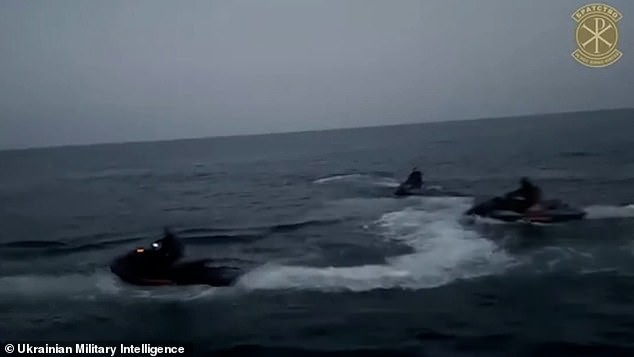
“Our state flag flew again in Ukrainian Crimea,” the ministry claimed after a “special operation”
Six weeks later, the remarkable story behind this intriguing propaganda film can finally be told.
It was one of the most daring commando raids in modern history, using ten jet skis to transport twenty Ukrainian frogmen on a 265-mile round trip across a treacherous, storm-ravaged stretch of the Black Sea.
Aspects of the caper are reminiscent of the glory days of the SAS, whose operations behind enemy lines in World War II inspired the recent BBC hit Rogue Heroes. Parts also resemble the plot of a Bond film. Ian Fleming’s novel Thunderball was inspired by the exploits of Royal Navy diver Lionel ‘Buster’ Crabb.
The August mission appears to have been coordinated by a battalion commander named only Borghese, who told how his men struck before dawn and shortly before 5 a.m. on a beach somewhere near the village of Olenivka, on the western tip of the Crimea, saved.
They then quietly crept inland toward a Russian base while five Ukrainian support ships raced along the northern side of the peninsula, firing machine guns and rockets at enemy positions in an attempt to create a diversion.
Their original plan was to plant explosives around the facility, an electronic warfare station with radar equipment and other vital equipment, before detonating them once they had safely cleared out.
But about 200 meters from the target, someone from the Ukrainian team was spotted, forcing them to engage in a chaotic firefight, deploying anti-tank weapons and rocket-propelled grenades.
“We had to capture the control center, plant explosives and blow it up, but because there was a battle going on we couldn’t get closer quietly,” Borghese told the Times newspaper, adding that they therefore “decided to simply destroy the control center . from a distance with anti-tank weapons, damage the antennas and withdraw’.
During the first battle, which lasted about 30 minutes, the group was able to cause significant damage to the main building and three military vehicles.
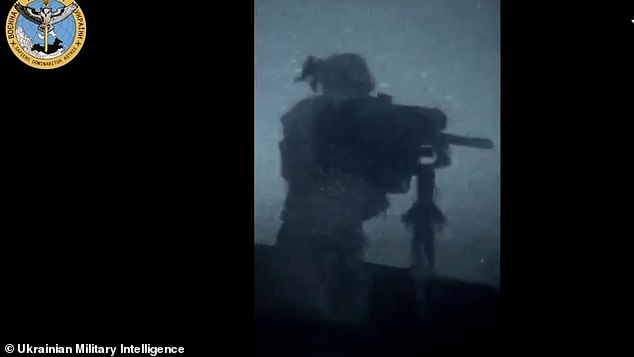
Ukraine said the operation succeeded in destroying valuable military equipment and killing several Russian personnel
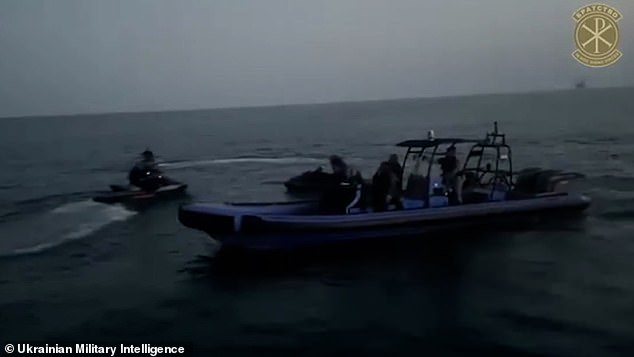
During the battle, which lasted about 30 minutes, the group was able to cause significant damage to the main building and three military vehicles.
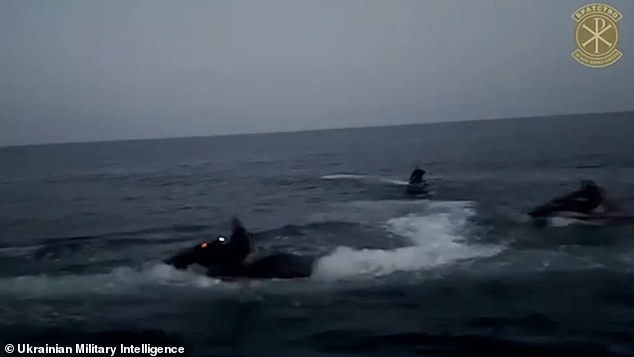
The unit landed on a beach somewhere near the village of Olenivka, on the western tip of Crimea, shortly before 5 a.m.
At that point, the leader of the group, named Levan, gave the order to withdraw. Ten minutes later they were able to meet on the beach and board their jet skis. It is unclear whether the footage of the Ukrainian flag raising was taken seconds before they took off or earlier in the mission before their cover was blown.
Either way, getting all twenty men home safely was easier said than done. After all, they were now the target of the combined might of the Russian navy and air force.
The enemy initially sent four fast Raptor patrol boats to pursue the jet skis. However, they soon encountered a Ukrainian naval vessel that would assist in the evacuation. It turned and sped back towards the mainland, with all four Raptors in pursuit.
That left the jet skis alone. But there was a second problem: not only did each machine have to be refueled twice during the mission – because they only have a limited range – they were also highly vulnerable to air attack.
Fortunately for Levan’s team, the five Ukrainian support ships that had provided an initial distraction returned to the battle and began firing Stinger anti-aircraft missiles, repeatedly forcing the enemy to withdraw.
“The Russian planes were overhead for four hours, maybe longer because they were turning,” Levan told the Times. ‘There was a certain number of enemy aircraft that entered the area, circled, hit various points and then turned around. It went like this non-stop for four to five hours.’
Luck remained for the Ukrainians until dawn, when the weather lent a helping hand. “Our guys are very loyal and the whole operation went like a miracle,” Borghese said. “There were clouds at dawn, so enemy aviation and their drones couldn’t work properly. When we were halfway home, the sun was shining and we had nice weather.’
All twenty men were therefore able to escape unharmed. If the mission had taken place much earlier or later, they might have been less lucky, he added. “An hour after the boys went ashore, a hurricane broke out which, as always, confirms that God is with us.”
Among those reportedly surprised by the success of the daring attack are British SAS troops and intelligence officers who are believed to be operating on the ground in Ukraine, helping train the country’s armed forces and assisting with planning and strategy .
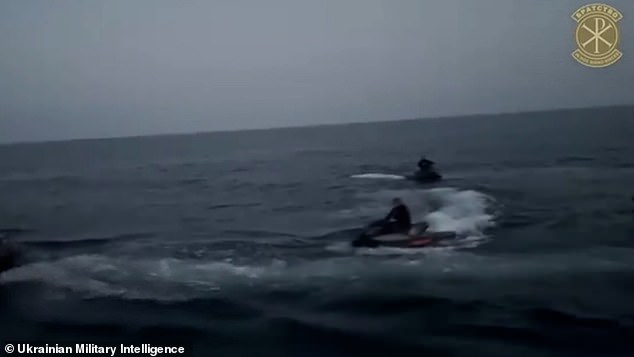
The fate of Crimea is increasingly seen as strategically crucial
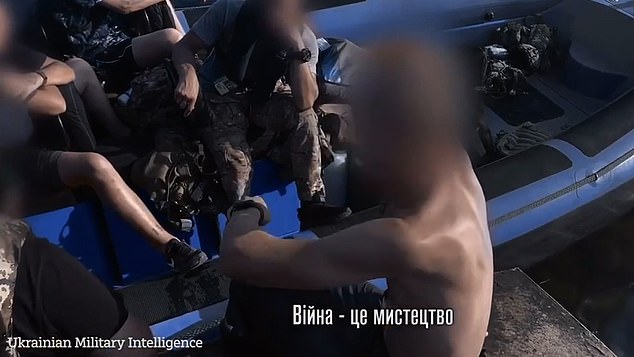
Ukraine’s allies are said to have initially advised against the jet ski attack, believing the machines would likely have difficulty covering the distance they had to travel.
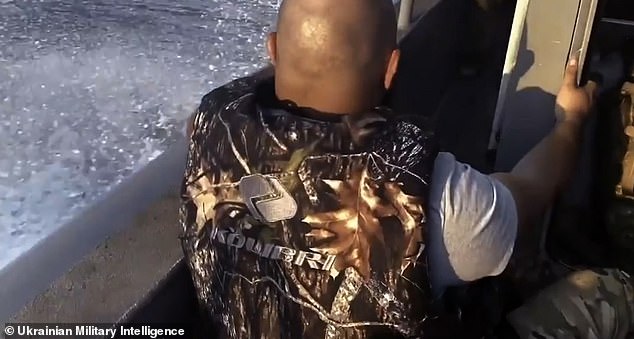
The fact that the Western allies were proven wrong was not only a major PR coup for Ukraine, but also helped open a new and potentially crucial front in the war.
According to Levan, the allies initially advised against the jet ski attack, thinking the machines would likely have difficulty covering the distance they had to travel. During a month of training, they were only able to test the craft on trips of up to 90 miles, weighing every gram of equipment to increase their fuel economy.
“They know and understand a lot at sea, but even for our British partners this seemed an almost impossible task,” said Levan. “Neither the Americans nor the British gave us much chance of success.”
The fact that the Western allies were proven wrong was not only a major PR coup for Ukraine, but also helped open a new and potentially crucial front in the war. A fortnight later, follow-up attacks on the Crimean port of Sevastopol caused British-made Storm Shadow missiles to hit the drydocks Russia uses to maintain its Black Sea Fleet, putting the facility out of action for months and destroying the Russian submarine Rostov-on was destroyed. -Don and the landing ship Minsk.
The next day, rockets hit an air defense installation near Yevpatoria, on the western side of the peninsula, with images of the resulting fireball making the rounds on social media.
And just over a week ago, the command headquarters of Russia’s Black Sea Fleet was targeted, with Ukraine claiming to have killed dozens of senior officers.
Such developments are important because the fate of Crimea is increasingly seen as strategically crucial in determining the long-term outcome of the war.
Currently, the peninsula provides a base from which Russia can conduct sustained air strikes on Ukrainian positions on the mainland. Stopping these attacks would make it significantly more difficult for the occupying forces to defend their front lines.
Importantly, last week Ukraine unveiled a 6-meter-long underwater kamikaze drone called Marichka. The newly designed torpedo, which can carry 450kg of explosives, will be used to attack the £3 billion Kerch Bridge, which Vladimir Putin built after annexation to allow goods and military equipment to flow between Russia and Crimea.
Its existence has allowed the Russians for years to turn the region into a fortress, protected by six air bases and a fleet of patrol boats, plus an extensive network of mines and submarine nets.
But as we now know, that’s not enough to stop a group of Ukrainian commandos in possession of very fast jet skis and a whole lot of derring-do.
